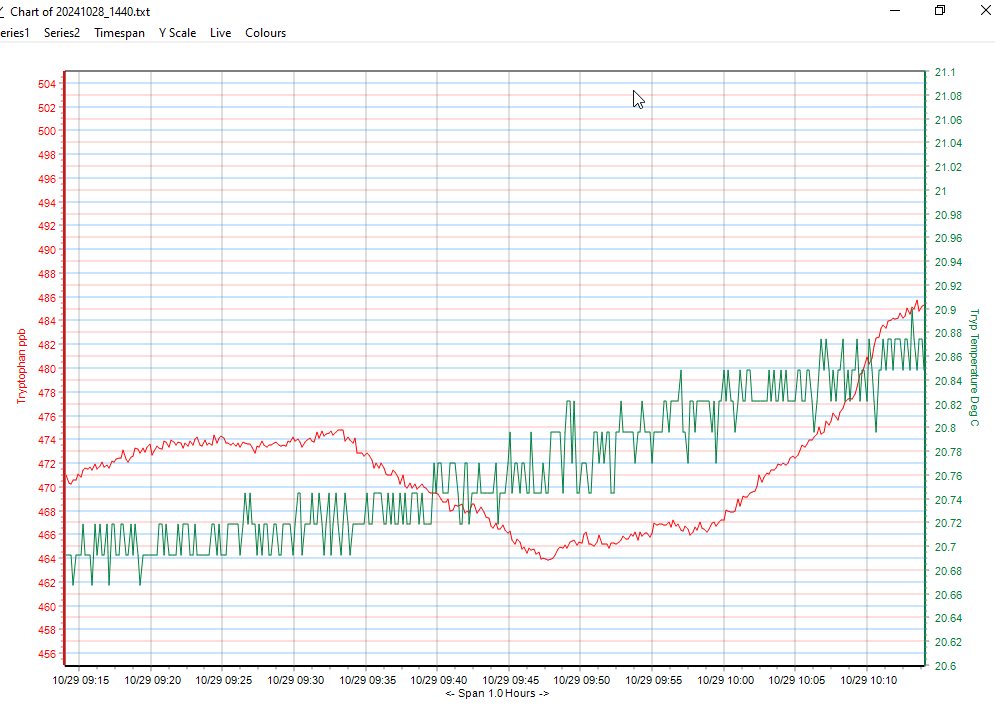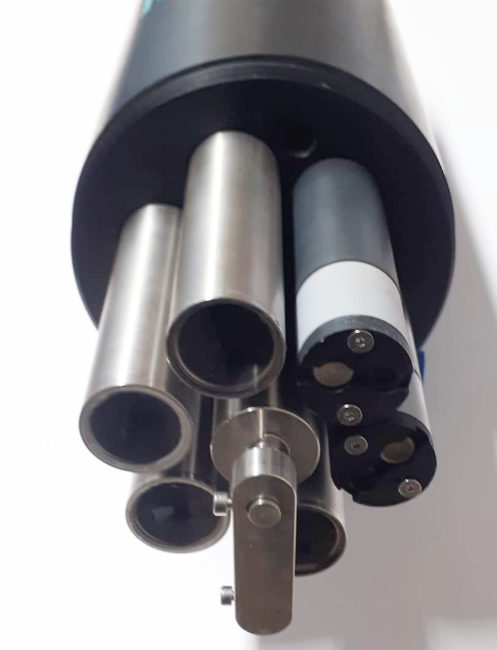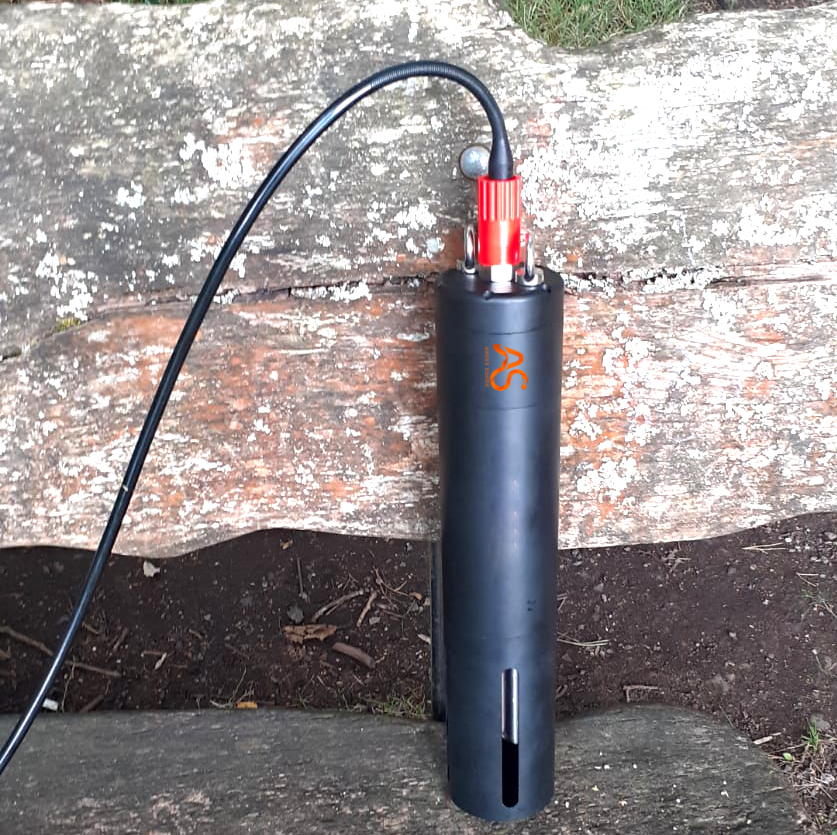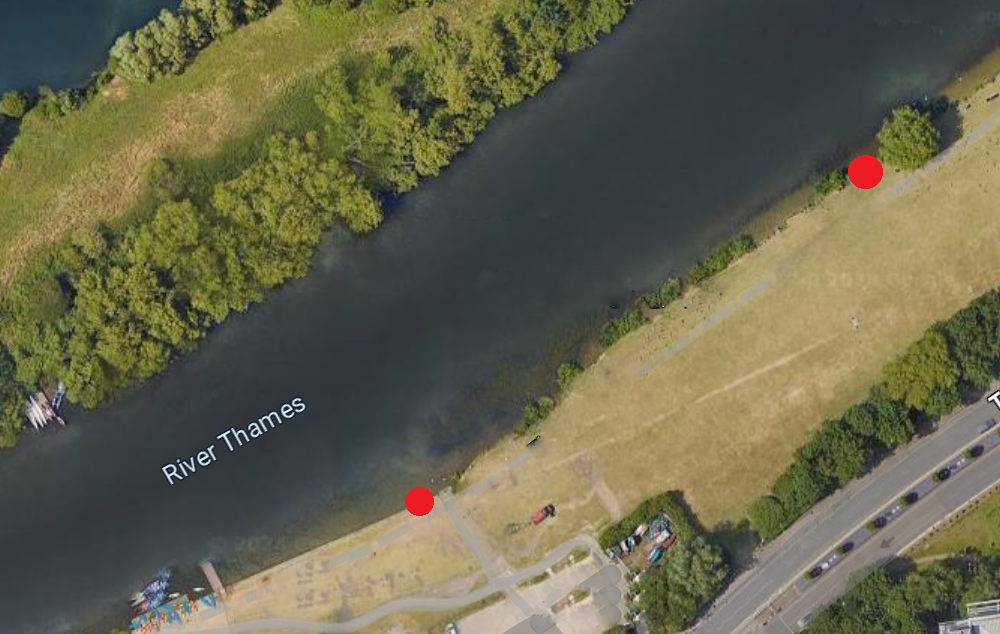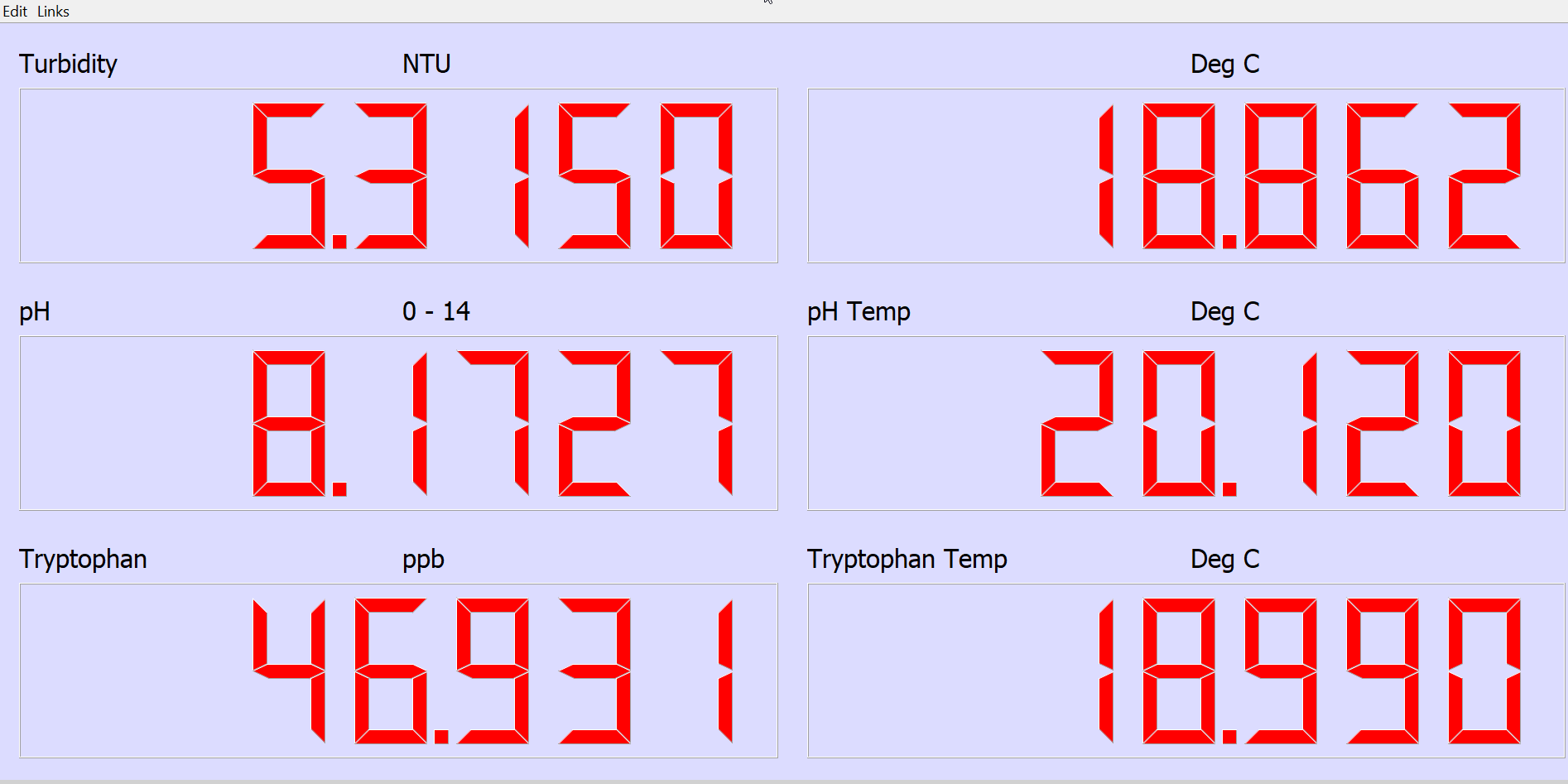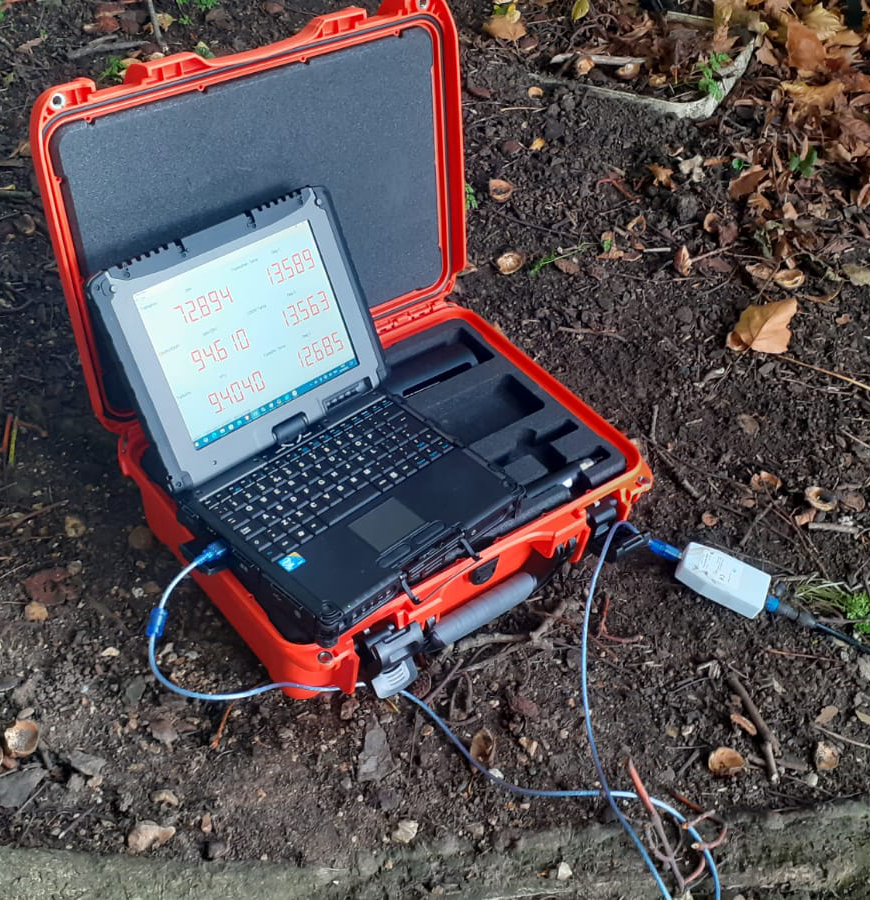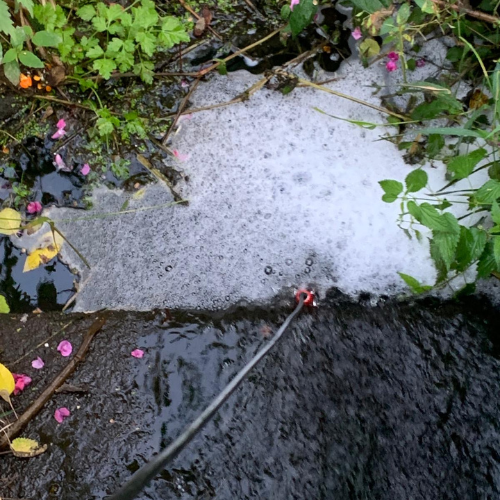Many instruments available for measuring fluorescence of Tryptophan are old-fashioned, complex to use, expensive, and require a high degree of proficiency to operate. These instruments may also require expensive additional housings and accessories before they can be deployed for any monitoring task. End users who are looking for a simple to use instrument to make fluorescence measurements of Tryptophan need look no further that The ARGES Tryptophan Sensor by Keynes Controls.
The ARGES Tryptophan Sensor by Keynes Controls is a single-channel instrument that can detect and report Tryptophan levels in the range of 0.5 - 2000 ppb. The sensor has been designed to be used as a stand-alone laboratory instrument, as part of a multi-parameter device inside a multiparameter housing, and can be connected directly into a plant-wide SCADA system using the in-built MODBUS protocol. The SDI12 and RS485 digital networks enable the sensors to be directly connected to Web based data loggers, Wi-Fi and Local Area Networks.
In-situ measurement, no sampling, no reagents
• Direct SI Unit output of parameters
• Optical window with coating to minimize clogging
• Real time measurement
• Automatic compensation for temperature effects
Measurement Integrity
All of the ARGEs sensor range have the serial numbers and the last calibration date stored internally. The user can access this information for reporting purposes. The sensors can be redeployed at any time with the calibration and serial number records are retained in the sensor.
Why Measure Tryptophan
Some types of organic matter fluoresce at the same wavelengths as tryptophan. ‘Tryptophan-like’ fluorescence in river water is associated with the presence of organic matter that can be easily degraded by microbes. This type of organic matter can arise in rivers from sewage inputs, from farm wastes such as cattle and pig slurry and silage. So the measurements from the ARGES-Tryptophan sensor can be used to identify the presence of these organic wastes in a river.
Sewage Detection
Human sewage fluoresces at the same wavelengths as Tryptophan, so The ARGES Tryptophan Sensor by Keynes Controls can be used measure accidental spillages of human waste into a river. The ARGES Tryptophan Sensor by Keynes Controls can help identify mis-connections with sewer pipes in urban river locations. The Tryptophan sensor is commonly deployed with the ARGES Ammonia, pH, Turbidity, Chlorophyll sensors when undertaking longer term monitoring tasks for human waste detection.
Product Features
| TYPE | RANGE (Typical levels) |
| Solid state Fluorometer | Excitation UV 280 nm |
| Concentration range: | 0.5 to 2000 ppb - other ranges on request |
| Resolution: | 0.01 ppb - 6 digits 2 decimal places |
| Accuracy: | +/- 1 ppb% of reading - Typical |
| Multi-parameter Housings |
7 / 3 Port Options |
| Calibration Period: | Approximately 2 year between Calibration - |
| Sensor Material | Stainless-steel body - Gold plated Connector pins |
| pH Range | 0 - 14 |
| Return Parameters | User Assigned layout - Tryp(ppb) + Temp Comp Tryp (ppb) + Temp Deg C + LUX |
| Digital Communications | SDI12 / RS485 / MODBUS Digital Communications |
| Detection | 300 - 400 nm |
| Simple Calibration | Single, Multi point Calibration Point Option |
| SI Units |
Trypotophan (ppb) Temperature (Degree Celsius) |
| Analogue Output |
0-2 V DC - proportional to concentration - optional |
Q-LOG Product Application Software
The ARGES Tryptophan Sensor by Keynes Controls is supplied with a free copy of the Keynes Q-LOG Applications software
The Q-LOG software runs on the Windows Operating System that can be used configure to acquire real-time measurements from individual ARGES sensors and multiparameter solutions. An optional USB interface enables the sensors to directly connect to a PC.
The measurements can be be shown in panel meters and charts.
Multiparameter Housing
The ARGES Tryptophan Sensor by Keynes Controls can be used as a stand-alone device or as a part of a multiparameter solution. Keynes Controls currently manufacture 7 port and 3 port sensor housings. An optional submersible brush unit is available for cleaning the fluorometer optics and this can be fitted into any port within the housings.
Multiparameter Measurements
Any combination of ARGES sensors selective can be fitted into the multiparameter housing
Real Sensor Test Results - River Thames Reading 19th August 2024
The ARGES Tryptophan, Turbidity and pH sensors were deployed on August 19th 2024 at the sites shown in red on the image.
The QLOG results screen shows the typical levels as recorded by the sensors. The sites were chosen as they are popular for river users for all types of sailing activity at the Thames Valley Park in Reading UK.
UK Local Tap Water Quality Comparison Results
The ARGES Chemical Sensors were used to test local tap water and this has been used a simple comparison guide to the water quality as monitored on the River Thames at Thames Valley Park.
Tap water
Turbidity 1.3 to 1.6 (NTU - Standard Units)
pH 7.2 Typical level
Tryptophan 0.3 ppb (parts per billion) - Human and animal sewage indicator
Calibration Period and Range
All of the sensors are Factory calibrated before shipment. The advanced design of the sensors means that the time between re-calibration of an instrument is minimised. Keynes Controls recommends a check calibration every 2 years. The User can adjust the calibration for a specified range to improve accuracy for dedicated tasks.
The ARGES Tryptophan fluorometer is a very sensitive device. The normal factory calibration settings are suitable for general operations. The calibration range can be User adjusted to suit the measurement application, for example 0 - 50 ppb for low concentration applications. The simplified calibration commands make this operation simple to carry out.
Keynes Controls offer calibration solutions for ARGES Tryptophan sensors which are available from the online shop. There is a finite life for these solutions. Keep the calibration solution in a cool place in a seal plastic bottle.
Sensor Connections
The ARGES fluorometers are very easy to use. Simply connect the sensor to the network type of choice. The sensor will detect the network traffic and automatically start communications. It is now possible to make configuration changes and measurements.
All of the ARGES fluorometers have the same pin-out as shown in the image opposite. The selective-ion sensors do not currently have an analogue output.
1 = +RS485 2 = -RS485 3 = SDI12 4 = Gnd 5 = 12V DC
Sensor Pin-out
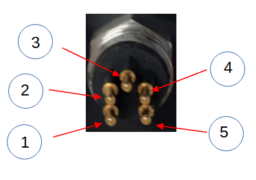
Specifications
| ENVIRONMENTAL CHARACTERISTICS | ||||
| Tryptophan | MDL 0.05 ppb | Range 0 - 2000 ppb | Non freeze | |
| Other ranges on request | 0 - 100 ppb (Low Level) | Ambient Range: 0 - 50 Degree Celsius | ||
| Water Temperature: -2 to 50 Degree Celsius | ||||
| Accuracy | +/- 5 % of Reading | |||
| PHYSICAL DIMENSIONS | ||||
| Resolution | 0.01 ppb | |||
| Length x Diameter: 22 x 205 mm | ||||
| Sample Period |
|
Weight: 108 g | ||
| Wiper Trigger | SDI12 Command | aM! | Maximum Depth : 50 m - 500m on request | |
| Excitation | UV | Built-in Network Types: | ||
| Housing | 316 Stainless Steel | MODBUS / SDI12 / RS485 / Analogue Output | ||
| Focal Point | In-front of sensor faceplate | |||
| Data Output | SI Units - ppb / Degrees Celcius | Supply Voltage: 10 - 18 V DC Standby Current 8 mA 24 mA Active measurement |
Supported Commands
| Most commonly used commands | ||
| Description | Master | Sensor Response |
| Send ID | aI! | a13KEYNESVWRDOA001\r\n |
| Address Query | ?! | a\r\n where a = Address |
| Start Measurement | aM! where a = Address | a0261\r\n |
| Concurrent Measurement: | aC! where a = Address | a0261\r\n |
| Get Measurement | aD! where a = Address | a+Tryptophan-ppb+Temp (Degree Celsius) |
| Read Serial Number | aXSN! | Instrument Response a+Serial-number |
| Calibration Date | aXCDT! | Instrument Response a+date |
Built-in Communication Options
The ARGES Tryptophan Sensor by Keynes Controls supports SDI-12, RS485 and MODBUS digital communications as standard enabling the sensors to be directly connected to Data Logger for remote web based reporting, onto Wi-Fi and Local Area Networks using the RS485 option, and directly into SCADA applications using the MODBUS.
MODBUS Operations
ALL of the ARGES range of chemical sensors support MODBUS network operations The sensors act as a slave unit only and can communicate to suitable controllers and SCADA systems that support the MODBUS Protocol. The sensors support 16 and 32 bit registers. .
The ARGES sensors can be connected to a PC based system using the optional USB-485-Pro media converter. This device can power the chemical sensor and supports the correct timing protocols for data transmission for MODBUS and standard RS485 network communications.
Additional Information:
Related Products by Keynes Controls: Submersible Fluorometer, Tryptophan sensor, ARGES Tryptophan, Chlorophyll Fluorometer, ARGES chlorophyll, Single Channel Fluorometer, Handheld Portable Fluorometer, Fluorometer Sensor, Submersible Chlorophyll Fluorometer, ARGES CDOM/FDOM, ARGES CDOM, Turbidity sensor, ARGES Turbidity, Hydrocarbon sensor, ARGES Hydrocarbon, ARGES Sensor, ARGES pH, pH Sensor, ARGES Dissolved oxygen, dissolved oxygen sensor, MODBUS fluorometer, SDI12 fluorometer, RS485 fluorometer, PAH
Key Words Related to Identifying Our Products or Intended Product Use or Product Outcome: Fluorometer, Tryptophan, Fluorometer price, Turner Fluorometer, Field Fluorometer, Digital Filter Fluorometer, Water Quality Sensor, Water quality instrument, Clean water, Water pollution sensors, Sewage Sensor, Sewage leak detector. Updated by Kathryn Thomas


